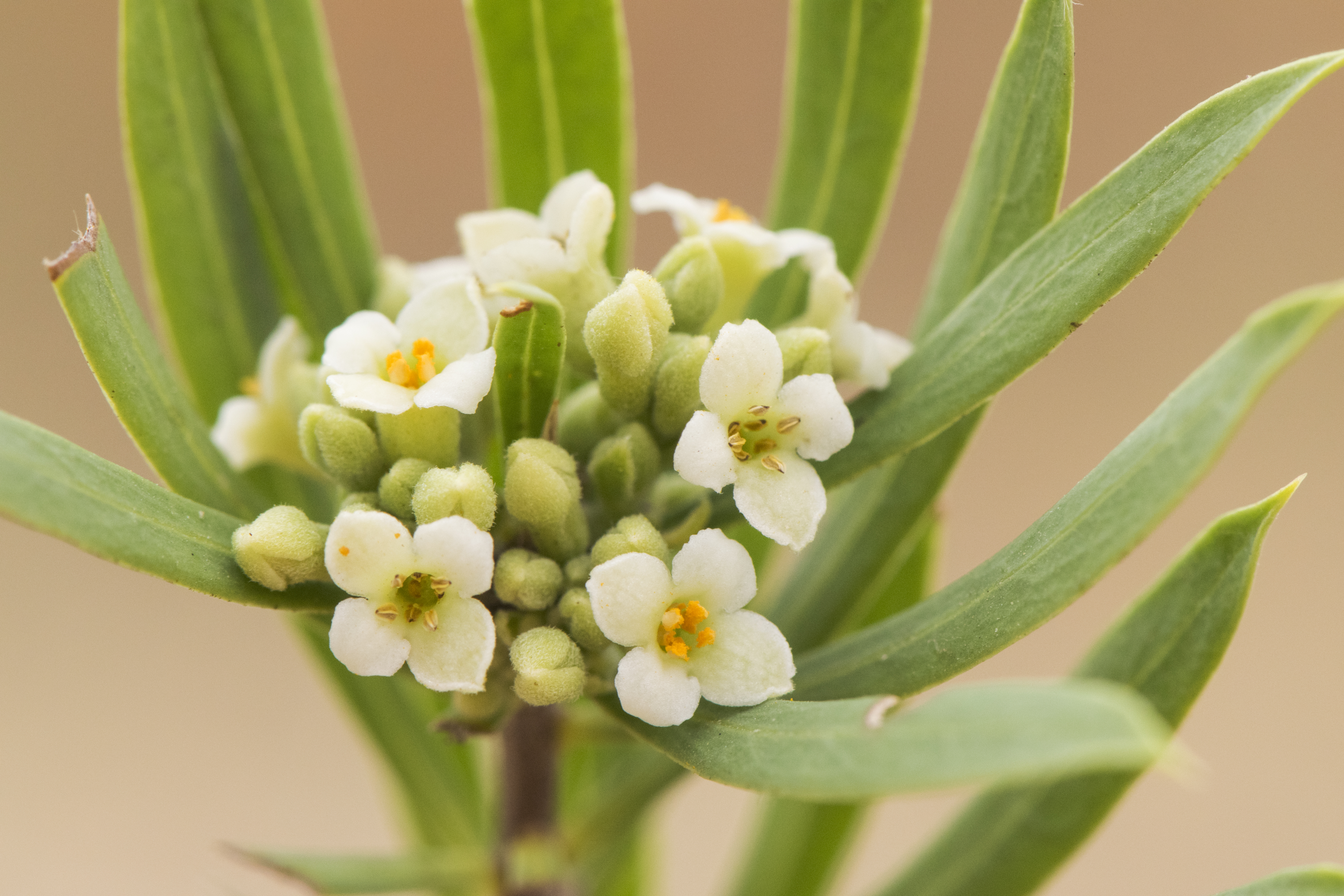Flax-leaved daphne
(Daphne gnidium)

Description
Daphne gnidium (commonly known as the flax-leaved daphne) is a poisonous evergreen shrub from the Mediterranean region with narrow, dense dark-green foliage and white fragrant flowers. Daphne gnidium is characterized by upright branches that grow 1.5 to 2 m (4 ft 11 in to 6 ft 7 in) tall. The dense lanceolate leaves are dark green with sticky undersides. It bears white fragrant flowers in late spring or early summer. The fruits are drupes and are round and red, about 8 mm (0.31 in) in diameter. They are produced during autumn. Daphne gnidium grows well in sandy loam. They are commonly found in fields, woodlands, garrigues, and hillsides. They are native to the areas surrounding the Mediterranean Sea (Southern Europe, Northern Africa, and the Middle East). Daphne gnidium contains the toxins mezerein and daphnetoxin. All parts of the plant are considered highly poisonous. Skin contact with the sap can cause dermatitis Chance of death is small yet possible within 6 hours after direct consumption. At least severe anabolic and indigestive reactions are expected (which may also trigger lethal allergic reactions). Daphne is a genus of between 70 and 95 species of deciduous and evergreen shrubs in the family Thymelaeaceae, native to Asia, Europe and north Africa. They are noted for their scented flowers and often brightly coloured berries. Two species are used to make paper. Many species are grown in gardens as ornamental plants; the smaller species are often used in rock gardens. All parts of daphnes are poisonous, especially the berries. Daphne species are shrubs, with upright or prostrate stems. Upright species may grow to 1.5 m (5 ft). Their leaves are undivided, mostly arranged alternately (although opposite in D. genkwa), and have short petioles (stalks). The leaves tend to be clustered towards the end of the stems and are of different shapes, although always longer than wide. The leaf surface may be smooth (glabrous) or hairy. Many species flower in late winter or very early spring. The flowers are grouped into clusters (inflorescences), either in the leaf axils towards the end of the stems or forming terminal heads. The inflorescences lack bracts. Individual flowers completely lack petals and are formed by four (rarely five) petaloid sepals, tubular at the base with free lobes at the apex.
Taxonomic tree:







